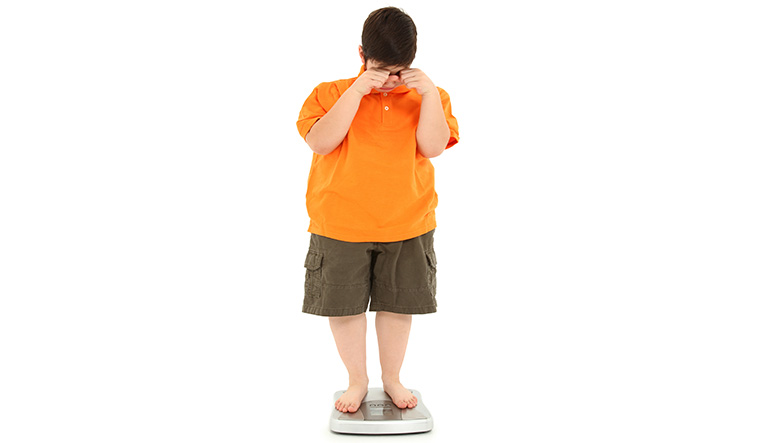Sleep problems in teenagers can be easily reversed by limiting evening exposure to blue light-emitting devices such as phones, tablets and computers.
Too much evening exposure to the blue light emitted from screens can affect the body’s circadian rhythm and the production of the sleep hormone melatonin, disrupting the quality of sleep.
Chronic sleep deprivation can cause fatigue and poor concentration as well as increase the risk of obesity, diabetes and heart disease.
The Dutch study presented at the European Society of Endocrinology annual meeting found a simple fix to the problem.
The researchers assessed the sleep patterns of 25 frequent users of phones in two settings: wear orange-tinted glasses that block blue light when using devices before bed time for a week and abstain from usage in the evening for a week.
Both methods were equally effective. Just one week of limiting exposure to blue-light emitting devices in the evening improved sleep quality of the participants and reduced symptoms of fatigue, lack of concentration and bad mood.
To deal with dementia
The World Health Organization has issued new guidelines to reduce the risk of cognitive decline and dementia.
Dementia affects about 50 million people globally, with nearly 10 million new cases added every year. The number of people with dementia is expected to triple to 152 million in the next 30 years, and the cost of caring for dementia patients is expected to rise to $2 trillion by 2030.
While age is the most important risk factor for cognitive decline, according to the report, "Dementia is not a natural or inevitable consequence of ageing”.
The guidelines provide evidence-based recommendations to prevent or delay the onset and progression of cognitive decline and dementia.
Getting regular exercise topped the list followed by nonsmoking, non-drinking healthy diet, controlling weight, and maintaining healthy blood pressure, cholesterol and blood sugar levels.
Vitamins and supplements did not appear to offer protection, nor did social activity and cognitive training and interventions.
There was also insufficient evidence to recommend antidepressants or hearing aids to reduce the risk of dementia. Nevertheless, being socially engaged, treating depression and managing hearing loss are important for good health and wellbeing.
Fast walkers live long
According to a British study published in the Mayo Clinic Proceedings, people who habitually walk faster tend to live longer regardless of their body weight or waist circumference.
Walking pace is an important marker of cardiorespiratory fitness and overall health.
To analyse the link between physical fitness—assessed by walking pace and handgrip strength—and life expectancy, the researchers used data from 474,919 participants with an average age of 58 years.
Among them, 12,823 people died over a median follow-up of seven years.
Participants with faster walking pace had longer life expectancies, ranging from 86 to 87 years in women and 85 to 86 years in men, across all weight groups.
On the other hand, participants with slow walking pace had shorter life expectancies. Slow walkers with a BMI less than 20 kg/m2 had an average of 72 years for women and 64 years for men.
A similar pattern of results was found for waist circumference measurements as well.
Early indicator
Diabetes is a strong predictor of deadly liver diseases, including cirrhosis and cancer, finds a British study published in the journal BMC Medicine.
The researchers looked at the medical records of 18 million adults and identified 136,703 patients with non-alcoholic fatty liver disease (NAFLD) and non-alcoholic steatohepatitis (NASH).
NAFLD is the most common liver disease in the world and is closely linked to obesity and type 2 diabetes. Even though NAFLD is a benign condition, about one in six people with the condition will go on to develop NASH, a more aggressive disease, which can lead to liver injury, cirrhosis, liver failure and even cancer.
Each NAFLD patient was matched with 100 controls without the disease to see who would develop liver cirrhosis and liver cancer over time.
Patients with NAFLD/NASH were more likely to have type 2 diabetes, hypertension and obesity than matched controls.
NAFLD/NASH patients who had type 2 diabetes were more than twice as likely to develop aggressive liver disease, suggesting that diabetes could be a good predictor of liver disease progression.
NAFLD/NASH patients were almost five times more likely to be diagnosed with cirrhosis and more than three and a half times more likely to be diagnosed with liver cancer.
In the zone of a second stroke
Smoking is already known to increase the risk of numerous cancers and cardiovascular events such as heart attack and stroke.
According to a Chinese study published in the Journal of the American Heart Association, smokers who do not quit after an initial stroke are more likely to suffer a second stroke.
The study included 3,069 patients who suffered a first stroke. Among them, 48 per cent were current smokers, 8.6 per cent were former smokers and 43.4 per cent were nonsmokers; 61.6 per cent of the current smokers quit smoking after the initial stroke.
During the study period, 9.5 per cent of the patients suffered a second stroke.
Compared to nonsmokers, the risk for a recurrent stroke was 93 per cent higher in persistent smokers, 31 per cent higher in those who quit smoking after the initial stroke and 16 per cent higher in former smokers.
The risk of a repeat stroke increased with the number of daily cigarettes smoked. Those who smoked up to 20 cigarettes daily were 68 per cent more likely to suffer a second stroke, while the risk was almost three times greater for those who smoked more than 40 cigarettes a day.
Bipolar disorder increases Parkinson’s risk
Patients suffering from bipolar disorder are seven times more likely to develop Parkinson's disease, according to a Taiwanese study published in the journal Neurology.
The researchers compared the medical records of 56,340 patients diagnosed with bipolar disorder between 2001 and 2009 with 225,360 matched controls without bipolar disorder. People in both groups did not have a history of Parkinson’s disease.
Both groups were followed until the end of 2011.
During the study, 372 people with bipolar disorder developed Parkinson's disease, compared to 222 of those without the disorder.
People with bipolar disorder developed Parkinson's disease at a younger age—64 years old at diagnosis compared to 73 years old for those without the disorder.
Patients who were hospitalised more often for bipolar disorder were more likely to develop Parkinson's disease. Those who were hospitalised one to two times per year were four times more likely to develop Parkinson's disease than those who were hospitalised less than once per year. The risk was six times greater for those who were hospitalised more than two times per year.
Did You Know
Weighing yourself daily can help you maintain or even lose weight. Seeing weight increase can motivate behavioural changes like exercising more and watching your diet.
Obesity
Don’t fat-shame children
Teasing children about their weight may lead to more weight and fat gain, according to a US study published in the journal Pediatric Obesity.
The study included 110 kids with an average age of 12 years at the start of the study. They were either overweight, or at risk of being overweight because their parents were overweight or obese.
They completed a brief questionnaire on whether they had been teased about their weight. They were then followed for 15 years.
Children who were teased about their weight had a 33 per cent increase in their body mass index each year compared with children who had not been teased. They also had a 91 per cent greater gain in fat mass (an additional 0.65 kg) per year.
According to the study authors, kids who are teased about their weight are more likely to engage in unhealthy behaviours, such as binge eating and avoiding exercise. The stress of being teased may also stimulate the release of the stress hormone cortisol, which may lead to weight gain.
Did You Know
Older adults who regularly play word and number puzzles such as crosswords and Sudoku have sharper brains and perform better on a range of cognitive tasks assessing memory, attention and reasoning.
International Journal of Geriatric Psychiatry
Diabetes linked to several cancers
People with type 2 diabetes have an increased risk for several cancers.
According to a Chinese study published in the Journal of Diabetes, diabetes can increase the risk for 11 types of cancer in men and 13 types of cancer in women.
The researchers identified 410,191 adults with type 2 diabetes from July 2013 to December 2016.
None of them had cancer at the start of the study. They were followed until December 2017.
Among them, 8,485 of the participants were diagnosed with cancer during the follow up period.
Men and women with diabetes had a 34 per cent and 62 per cent elevated risk of cancer compared to men and women without diabetes, respectively.
For men, the greatest risk was for prostate cancer; the risk was 86 per cent greater. They also had a higher risk for leukaemia, skin cancer, thyroid cancer, lymphoma, kidney cancer, liver cancer, pancreatic cancer, lung cancer, colorectal cancer, and stomach cancer.
For women with diabetes, the highest risk was for nasopharynx cancer. They also had a higher risk for liver cancer, oesophageal cancer, thyroid cancer, lung cancer, pancreatic cancer, lymphoma, uterine cancer, colorectal cancer, leukaemia, breast cancer, cervical cancer, and stomach cancer.
The study found a lower risk for oesophageal cancer and gallbladder cancer for men and women with diabetes, respectively.
Diet matters
Unhealthy diets accounted for 5.2 per cent of all new cancer cases among adults 20 and older in the US in 2015, according to a study published in JNCI Cancer Spectrum.
This is similar to the rates of cancer cases associated with alcohol consumption, which is 4 to 6 per cent. In comparison, being obese accounts for 7 to 8 per cent of the cancer cases and physical inactivity is associated with 2 to 3 per cent.
The researchers identified seven dietary factors that could increase the risk of cancer. Low whole-grain intake accounted for the largest proportion of new cancer cases, followed by low dairy intake, high intake of processed meat and red meat, low fruit and vegetable intake and high intake of sugary beverages.
The largest number of cancer cases associated with poor diet was for colorectal cancer, followed by cancer of the mouth, pharynx, and larynx, uterine cancer, post-menopausal breast cancer, kidney cancer, stomach cancer and liver cancer.
Middle-aged men had the highest proportion of diet-related cancers compared to other age and gender groups.
Did You Know
Drinking 32 ounces of energy drink in an hour can cause abnormal electrical activity in the heart and increase blood pressure.
Journal of the American Heart Association
For mothers' wellness
Giving a single dose of antibiotics soon after delivery to women who undergo assisted vaginal birth could halve the rate of maternal infections and reduce the need for antibiotics later.
Pregnancy-related infections after assisted vaginal delivery are a major cause of death and serious illness, affecting about one in five women worldwide.
For the study published in The Lancet, 3,427 women were randomly assigned to receive either a single dose of intravenous amoxicillin with clavulanic acid or a saline placebo about three hours after delivery.
Among them, 19 per cent of those who received the placebo developed an infection after childbirth, compared with only 11 per cent of those in the antibiotic group. The rates of sepsis, a more serious infection, were 56 per cent lower in women who received the antibiotics than those who received the placebo.
Women who received the antibiotics also had lower rates of perineal infection, perineal pain, burst stitches and problems feeding babies as a result of pain. They also had a better recovery after childbirth.
A single dose of antibiotic given prophylactically also reduced the overall use of antibiotics for post-delivery infections by 17 per cent.
Delayed fatherhood has consequences
Men who delay fatherhood may be putting the health of their partners and children at risk, according to US study published in the journal Maturitas.
To evaluate the effect of parental age on fertility, pregnancy and the health of children, the researchers reviewed 40 years of research.
Men aged 45 and older can have decreased fertility. Their partners are at a greater risk for increased pregnancy complications such as gestational diabetes, preeclampsia and preterm birth. Infants born to older fathers have a higher risk of premature birth, late still birth, low birth weight, higher incidence of newborn seizures and birth defects such as congenital heart disease and cleft palate.
As they get older, these children have an increased risk for cancers, psychiatric and cognitive disorders, and autism.
CONTRIBUTOR: SHYLA JOVITHA ABRAHAM









